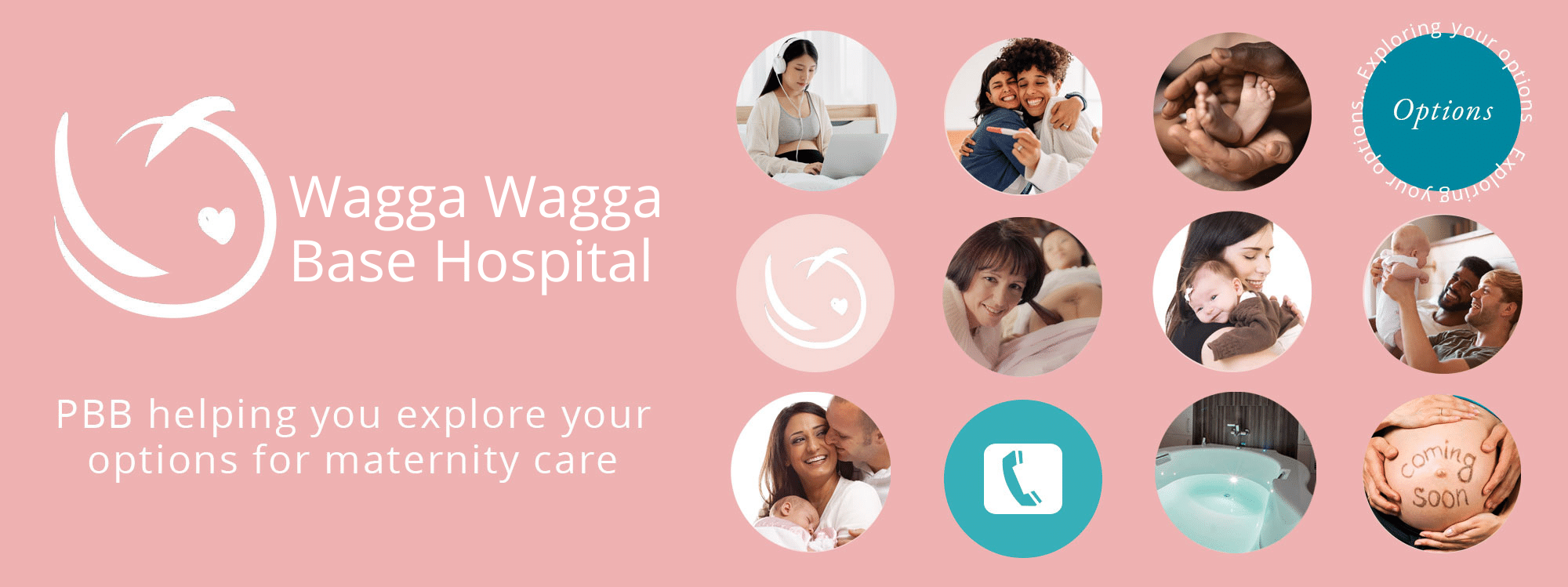
The hospital is the largest referral hospital within Greater Southern Area Health Service, with about 700 birth each year. They offer antenatal, birthing and postnatal care in the area. The hospital is located at Edward St, Wagga Wagga, NSW 2650. They aim to promote a nurturing environment for women and their families, focusing on healthy, positive experiences throughout pregnancy, birth, and early parenting.
Hospital’s Map
Wagga Wagga Base Hospital Services

Does Wagga Wagga Base Hospital have visiting private midwives?
NO

Does Wagga Wagga Base Hospital have visiting GP Obstetricians?
YES

Does Wagga Wagga Base Hospital have visiting Obstetricians?
YES
Hospital Facilities
Antenatal Beds
Birthing Rooms
Postnatal Beds
Special Care Nursery Beds
Neonatal Intensive Care Beds
Are there birth pools available for labour and birth?
Birth centres are designed to be a home away from home. A birth centre is a separate unit located away from the standard birth unit. Birth centres encompass a philosophy that pregnancy and birth are normal, natural events in the life of a woman and her family.
Does Wagga Wagga Base Hospital have a birth centre?
Birth Suite Tour Video
Coming soon
What support is available if I have difficulties breastfeeding my baby?
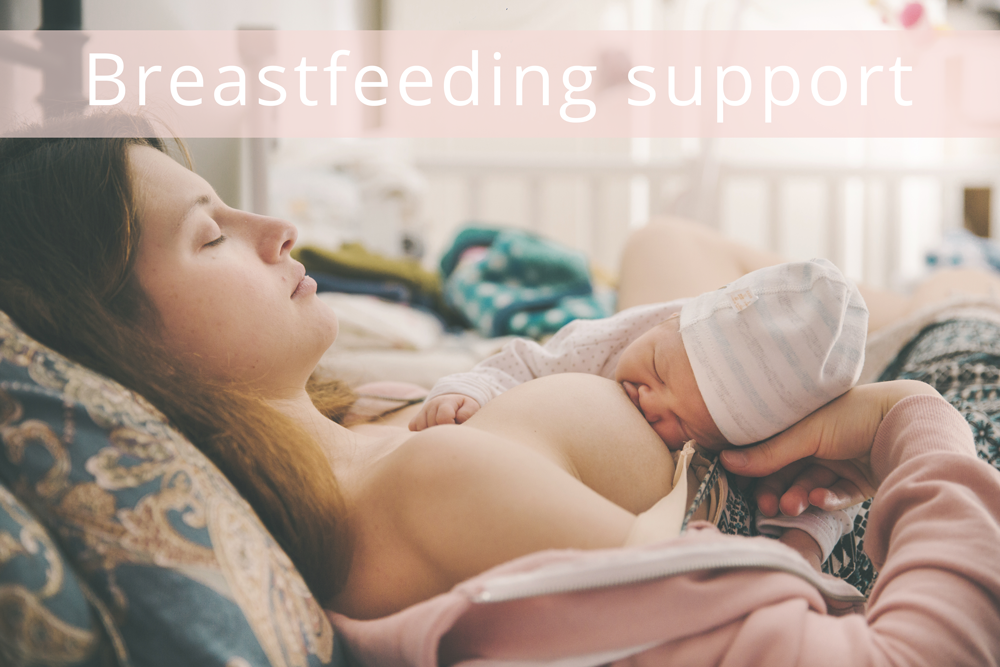
Baby-friendly accredited?
Wagga Wagga Base Hospital is not accredited under the global Baby Friendly Health Initiative program.
Wagga Wagga Base Hospital Statistics

How a woman’s labour starts influences the chance interventions in labour. If labour starts spontaneously, there is less likelihood of interventions. If a woman has an induction of labour there is an increased chance of further interventions. In the above graph, spontaneous labour refers to labour that starts on its own. Labour artificially sped up refers to labours starting spontaneously but are artificially sped up with medication or breaking the bag of water.
Unfortunately, national statistics do not separate spontaneous labour and labour artificially sped up. So the Australian national statistics combine these two together as spontaneous labour.
Induction of labour in PBB’s graph refers to one or more of the following interventions used to artificially start labour:
- Artificial rupture of membranes
- Balloon catheter to open the cervix
- Prostaglandins placed in the vagina
- Synthetic oxytocin drug to start or speed up labour
No labour is when a woman has an elective (non-emergency) caesarean before labour starts.
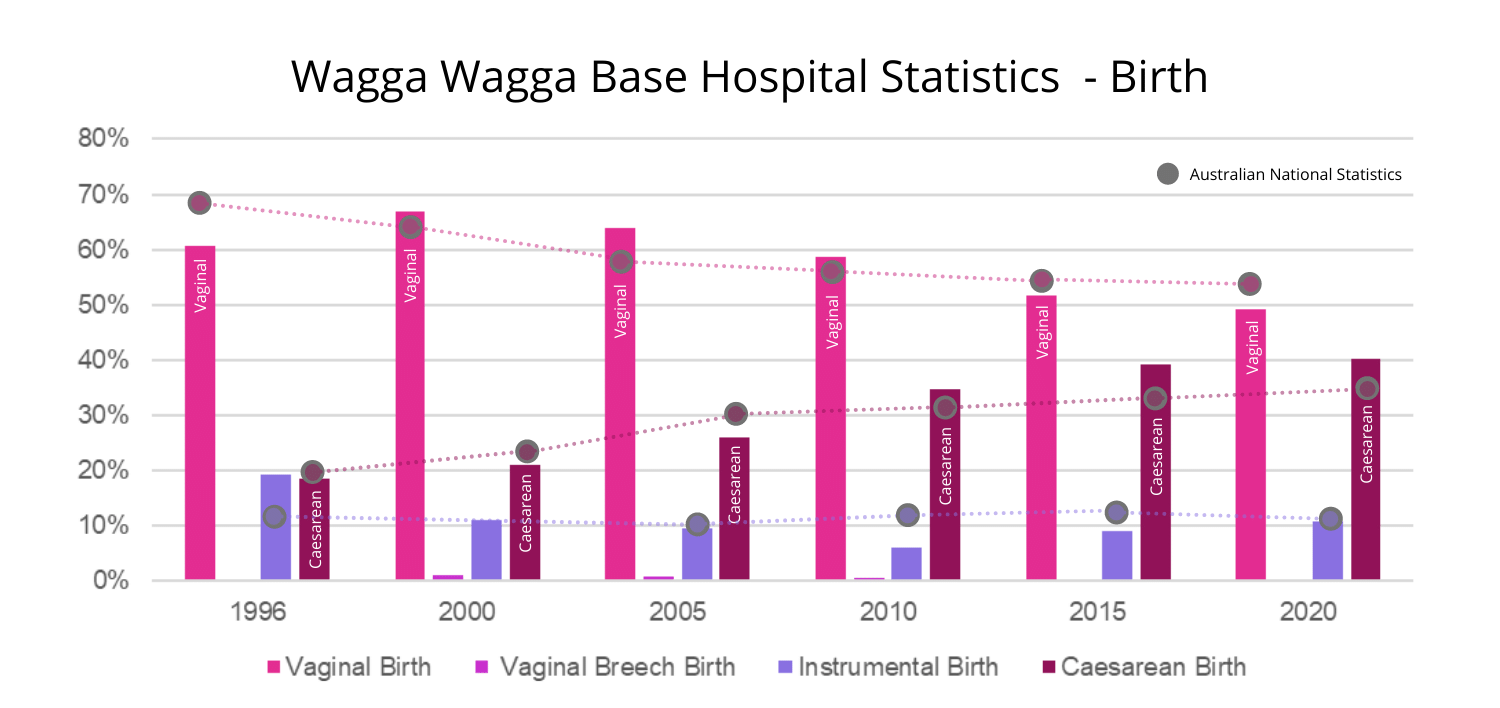
Since 1985, the World Health Organization (WHO) has recommended countries keep the caesarean birth rate between 10–15% to ensure mortality rates are kept low for mothers and babies (WHO’s last statement update was April 2015). Since 1995 the caesarean birth rate has increased every year across Australia. In 2020 the caesarean birth rate in the NSW maternity hospitals was more than double the WHO recommendation.
A small number of breech babies are born vaginally. Instrumental births include forceps birth and vacuum extraction. The caesarean birth rate includes both elective (planned) and emergency (unplanned) caesarean births.
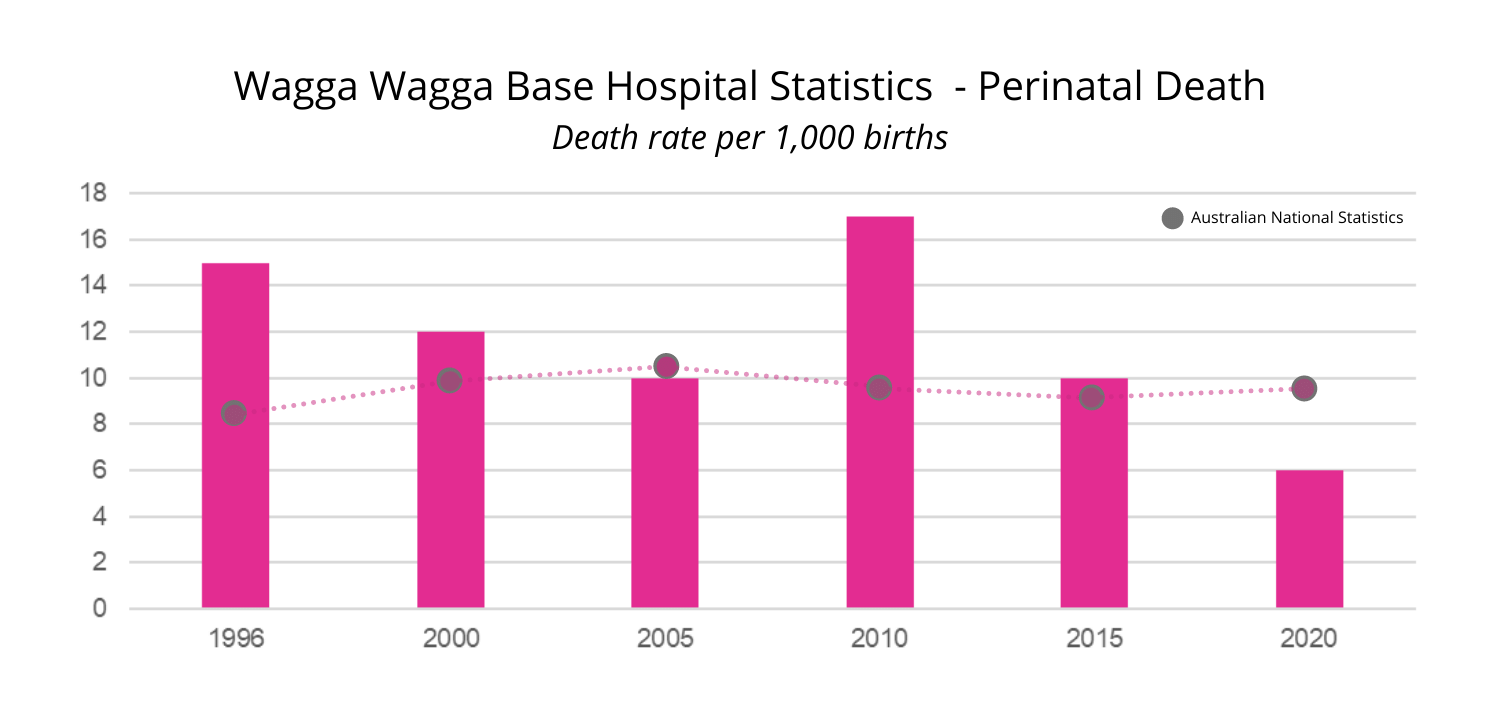
Please note that even though there is a dramatic increase in interventions in labour and caesarean birth – there is no change in the perinatal death rate.
PBB attained the data in the statistics from the Australia’s Mothers and Babies by Australian Institute of Health and Welfare (AIHW) and NSW Mothers and Babies by the NSW Ministry of Health.
Photo Gallery
PBB has created this page to help you be informed about local maternity services. We’d love for you to send us photos of Wagga Wagga Base Hospital to include on this page. Send photos to our webmaster.
Date page published 20th March 2022
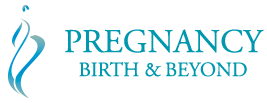


Hi there,
I’ve just stumbled across your website and wanted to add some information for the Wagga Wagga Base Hospital Maternity Ward.
This is based off my experience;
– Warm water immersion is available in the birth suites. I was able to use a shower head on my back and one my stomach during labour.
– I believe there are two birth pools available. I was unable to use one as they were already being occupied at the time of my labour.
– I believe (from memory) there are 6 special care nursery bays along with the C-pap machine area. They also offer a basic self contained family room. We were able to stay the night in this room before being discharged with our baby the next morning.
– Some of the midwives are trained Lactation Consultants.
I hope this information helps.
Kind regards,
Kiera
Hi Kiera – thank you so much for letting us know. I’ve asked our web person to update the page with your information.